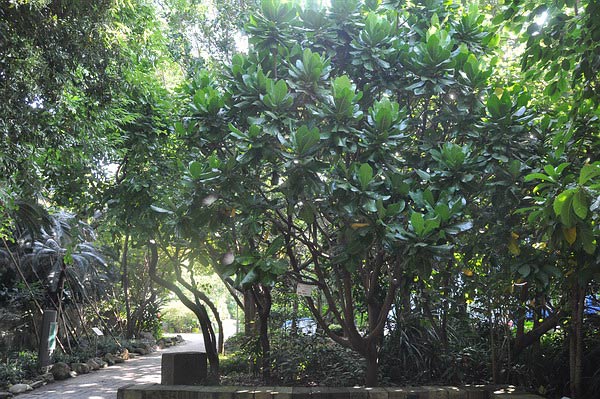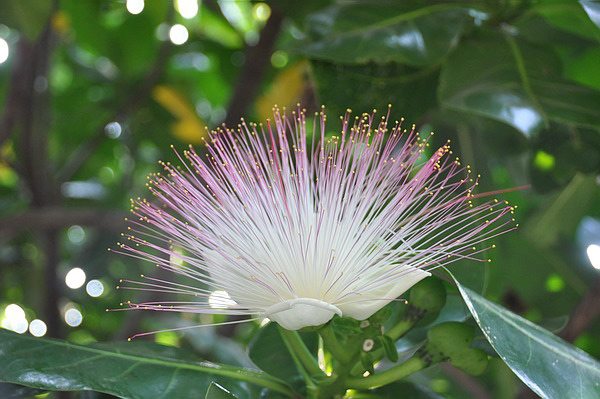Barringtonia asiatica
The Indian barringtonia is widely distributed along tropical and subtropical coastlines, including the shores of the Indian Ocean, Southeast Asia (such as Malaysia and the Philippines), the eastern coast of Asia, northern Australia, the Pacific Islands, and parts of East Africa. It is well known for its distinctive fruit shape and remarkable adaptability to coastal environments.
The Indian barringtonia originates from the unique appearance of its fruit, which resembles the legs of a Go board table. Because the fruit is box-shaped, the species is also called the “box-fruit tree” in other regions. These large fruits are characterized by a hard outer shell and a thick, fibrous middle layer, which give them excellent buoyancy and allow them to float on seawater. Consequently, the fruits can drift long distances with ocean currents, making the species a typical example of a sea-drift plant. This effective dispersal strategy enables the Indian barringtonia to colonize vast tropical coastal areas and establish stable populations.
Beyond its distinctive fruits, the Indian barringtonia is also admired for its striking flowers, which are white to pale pink and feature more than 400 long stamens. Because of these numerous stamens, the flowers are humorously nicknamed “the flower with the most boyfriends.” The blossoms open at night, releasing a pleasant fragrance that attracts nocturnal insects for pollination.
Ecologically, the Indian barringtonia plays an important role in coastal forests as both a natural windbreak and sand stabilizer. Its broad canopy and well-developed root system help withstand strong sea winds and reduce their impact on inland environments. At the same time, its roots anchor and stabilize sandy soils, preventing coastal erosion and maintaining the integrity of shoreline ecosystems. In Taiwan, this species is a dominant component of tropical coastal forests such as the Banana Bay Tropical Coastal Forest Ecological Reserve on the western coast of Kenting National Park, underscoring its ecological importance in protecting and sustaining coastal landscapes.

